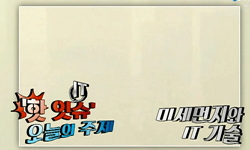최근 대기 중의 미세먼지의 농도가 높아서 국민들의 관심사가 되고 있다. 자동차의 증가와 산업 활동 등에 의해 우리나라 내에서의 먼지 배출도 증가하고 있으며, 중국으로 부터 장거리 이...
http://chineseinput.net/에서 pinyin(병음)방식으로 중국어를 변환할 수 있습니다.
변환된 중국어를 복사하여 사용하시면 됩니다.
- 中文 을 입력하시려면 zhongwen을 입력하시고 space를누르시면됩니다.
- 北京 을 입력하시려면 beijing을 입력하시고 space를 누르시면 됩니다.
분무 방전극을 이용한 미세먼지 처리효율 향상에 관한 연구 = A study on the development of particle collection efficiency using an electrosprayed discharge electrode
한글로보기https://www.riss.kr/link?id=T14104384
- 저자
-
발행사항
서산 : 한서대학교 일반대학원, 2016
-
학위논문사항
학위논문(석사) -- 한서대학교 일반대학원 , 환경공학과 대기오염제어 , 2016. 2
-
발행연도
2016
-
작성언어
한국어
- 주제어
-
발행국(도시)
충청남도
-
형태사항
55 ; 26 cm
-
일반주기명
지도교수: 김종호
- 소장기관
-
0
상세조회 -
0
다운로드
부가정보
국문 초록 (Abstract)
본 연구에서는 재비산 문제를 해결할 수 있는 습식 전기집진장치에서 미세먼지 처리 효율을 높이기 위하여 정전분무 방전극을 제작하여, 일반적인 전기집진기의 설계치 범위 안에서 집진효율 향상시키고자 하였다. 실험한 결과, 같은 조건에서 건식 방전극을 사용한 건식 전기집진기보다 정전분무 방전극을 사용한 습식 전기집진기는 높은 효율을 나타냈으며, 정전분무 방전극의 노즐의 직경이 작을수록 더 높은 효율을 나타내었다. 또한 일반적으로 집진효율이 낮은 입경이 0.1 ~ 1.0 ㎛ 사이의 먼지의 집진 효율은 전기장 강도가 -3.5, 4.5 kV/cm에서 0.1 ~ 1.0 ㎛의 집진효율은 -2.5 kV/cm 일 때 보다 약 40 %의 집진효율이 향상되었다.
최근 대기 중의 미세먼지의 농도가 높아서 국민들의 관심사가 되고 있다. 자동차의 증가와 산업 활동 등에 의해 우리나라 내에서의 먼지 배출도 증가하고 있으며, 중국으로 부터 장거리 이동에 의한 영향도 받는 것으로 알려져 있다. 우리나라에서는 미세먼지에 대한 대기환경기준을 1995년부터 PM10 항목을 설정하여 관리하여 왔으며, 2015년부터 PM2.5를 신설하고, 기준치를 50 ㎍/m3(24시간 평균)으로 유지하도록 규정하였다. 또한 대기환경기준을 유지하기 위해 수단의 법률인 배출허용기준도 강화될 것이라 판단된다. 산업시설에서 먼지를 처리하는 집진장치로는 원심분리기(Cyclone), 세정집진장치(Scrubber), 여과집진장치(bag filter), 전기집진장치(Electrostatic precipitator) 등이 개발되어 사용되고 있다. 이 중 전기집진장치는 낮은 압력손실로 많은 양의 가스를 처리 할 수 있으나 0.1 ~ 1.0 ㎛ 크기의 먼지에 대해서는 집진효율이 다른 크기의 먼지에 비해 비교적 낮은 단점이 있다. 또한 전기집진장치는 집진판에 집진 된 먼지와 방전극에 쌓인 먼지를 주기적으로 털어주어야 하는데, 대부분의 건식 전기집진기는 추타방식으로 먼지를 털어낸다. 이러한 과정에서 먼지의 재비산이 발생하여 집진효율을 저하시킨다.
본 연구에서는 재비산 문제를 해결할 수 있는 습식 전기집진장치에서 미세먼지 처리 효율을 높이기 위하여 정전분무 방전극을 제작하여, 일반적인 전기집진기의 설계치 범위 안에서 집진효율 향상시키고자 하였다. 실험한 결과, 같은 조건에서 건식 방전극을 사용한 건식 전기집진기보다 정전분무 방전극을 사용한 습식 전기집진기는 높은 효율을 나타냈으며, 정전분무 방전극의 노즐의 직경이 작을수록 더 높은 효율을 나타내었다. 또한 일반적으로 집진효율이 낮은 입경이 0.1 ~ 1.0 ㎛ 사이의 먼지의 집진 효율은 전기장 강도가 -3.5, 4.5 kV/cm에서 0.1 ~ 1.0 ㎛의 집진효율은 -2.5 kV/cm 일 때 보다 약 40 %의 집진효율이 향상되었다.
다국어 초록 (Multilingual Abstract)
The Korean government has set up PM10 for the air quality standard of fine particles since 1995, and newly made PM2.5 in 2015 according to which the baseline should stay at 50 ㎍/m3(the mean 24 hours). Also, it is judged that allowable emission standards as a legal means to keep air quality standards will be enhanced.
As dust collectors to treat fine particles in industrial facilities, cyclone, scrubber, bag filter, and electrostatic precipitator are already developed and used.
Among them, electrostatic precipitator is able to treat a large amount of gas with a low loss of pressure. However, its dust collection efficiency for the fine particle with 0.1 ~ 1 ㎛ in size is relatively lower than that for other sizes of particles. In addition, the fine particles collected by its dust collection plate and the fine particles piled up in discharge electrode should be brushed away regularly. Most dry type electrostatic precipitator brush off fine particles in the way of rapping. In the process, fine particles are scattered again, and thus dust collection efficiency gets lower.
To increase fine particle treatment efficiency in wet-electrostatic precipitator that can solve the problem of re-scattering, this study produced electrospray electrode and tried to improve dust collection efficiency in the design value range of general electrostatic precipitator.
According to test, in the same conditions, wet-electrostatic precipitator using electrospray electrode showed higher efficiency than dry-electrostatic precipitator using wire electrode, and the smaller diameter the nozzle of electrospray electrode had, the higher efficiency the precipitator had. In addition, the dust collection efficiency for the particle with 0.1 ~ 1.0 ㎛ in diameter, which showed generally low collection efficiency, was improved around 40% more at the electric field strength -3.5, 4.5 kV/cm than at -2.5 kV/cm.
The recent rise in concentration of fine in the air draws a lot of people's attention. More vehicles and industrial activities than before have led into an increase in dust emission in Korea, which was also known to be influenced by long distance move...
The recent rise in concentration of fine in the air draws a lot of people's attention. More vehicles and industrial activities than before have led into an increase in dust emission in Korea, which was also known to be influenced by long distance movement from China.
The Korean government has set up PM10 for the air quality standard of fine particles since 1995, and newly made PM2.5 in 2015 according to which the baseline should stay at 50 ㎍/m3(the mean 24 hours). Also, it is judged that allowable emission standards as a legal means to keep air quality standards will be enhanced.
As dust collectors to treat fine particles in industrial facilities, cyclone, scrubber, bag filter, and electrostatic precipitator are already developed and used.
Among them, electrostatic precipitator is able to treat a large amount of gas with a low loss of pressure. However, its dust collection efficiency for the fine particle with 0.1 ~ 1 ㎛ in size is relatively lower than that for other sizes of particles. In addition, the fine particles collected by its dust collection plate and the fine particles piled up in discharge electrode should be brushed away regularly. Most dry type electrostatic precipitator brush off fine particles in the way of rapping. In the process, fine particles are scattered again, and thus dust collection efficiency gets lower.
To increase fine particle treatment efficiency in wet-electrostatic precipitator that can solve the problem of re-scattering, this study produced electrospray electrode and tried to improve dust collection efficiency in the design value range of general electrostatic precipitator.
According to test, in the same conditions, wet-electrostatic precipitator using electrospray electrode showed higher efficiency than dry-electrostatic precipitator using wire electrode, and the smaller diameter the nozzle of electrospray electrode had, the higher efficiency the precipitator had. In addition, the dust collection efficiency for the particle with 0.1 ~ 1.0 ㎛ in diameter, which showed generally low collection efficiency, was improved around 40% more at the electric field strength -3.5, 4.5 kV/cm than at -2.5 kV/cm.
목차 (Table of Contents)
- Ⅰ. 서 론 1
- 1. 연구의 배경 1
- 2. 연구의 목적 2
- Ⅰ. 서 론 1
- 1. 연구의 배경 1
- 2. 연구의 목적 2
- Ⅱ. 이론적 고찰 3
- 1. 전기집진기 3
- 1.1 방전 메카니즘 4
- 1.2 입자의 하전 6
- 1.3 전기적 입자 이동속도 12
- 1.4 집진효율 13
- 1.5 입자의 전기 비저항 14
- 1.6 전기집진기의 종류 및 구조 16
- 2. 정전분무 20
- 2.1 정전분무의 기본 원리 21
- 2.2 하전방법에 따른 특징 22
- Ⅲ. 연구 내용 및 방법 25
- 1. 실험장치의구성 25
- 1.1 먼지 발생장치 25
- 1.2 집진장치 28
- 1.3 측정장치 29
- 2. 실험방법 31
- Ⅳ. 결과 및 고찰 32
- 1. 전류-전압 특성 32
- 2. 집진효율 34
- 2.1 방전극에 따른 집진효율 34
- 2.2 입경별 집진효율 35
- 2.3 코로나 전력 비율에 따른 집진효율 39
- Ⅴ. 결 론 40
- 참고문헌 41
- ABSTRACT 46
- 감사의 글 48









